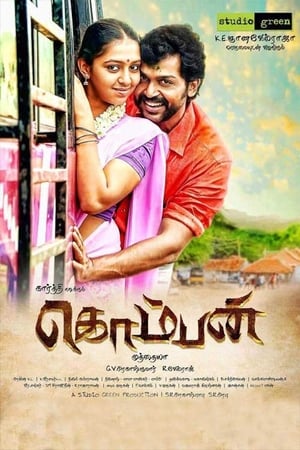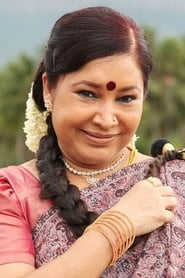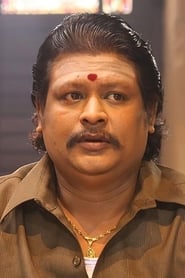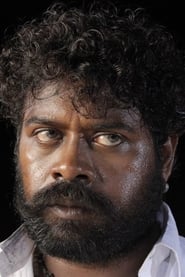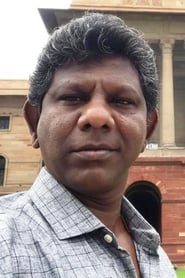Cast
View AllKarthi
as Kombaiah Pandian
Lakshmi Menon
as Palani Kombaiah Pandian
Rajkiran
as Muthiah
Super Subbarayan
as Gundan Ramasamy
I. M. Vijayan
as Muthukalai
Kovai Sarala
as Kottaiamma
Karunas
as Muniyandi
Thambi Ramaiah
as Rajakili
Yogi Babu
as
Vela Ramamoorthy
as Duraipandi
G. Marimuthu
as Pattasu
Namo Narayanan
as
G. Gnanasambandam
as
Raja Simman
as
Boxer Dheena
as Santhanakalai
Crew
Director
- M. Muthaiah
Writer
- M. Muthaiah
Producer
- K. E. Gnanavelraja
- S. R. Prakashbabu
- S. R. Prabhu
Reviews
timesofindia
For both Karthi and director Muthaiah, Komban is a retread. If Karthi's character of Kombaiya Pandian reminds you of a somewhat righteous Paruthiveeran, the plot — a ruffian trying to mend his ways for his family — is the same as we saw in Muthaiah's debut film Kutti Puli. There, Sasikumar played a rouge-with-a-good-heart whose mother tries to reform him by getting him married. Here, Karthi plays a do-gooder with a temper that often lands him in trouble and he attempts to reform after marriage, because of his concerned father-in-law. The villain in both these films is a big shot who feels slighted by the hero's arrogance and wants revenge while the heroine is an intrepid girl, interestingly, played in both the films by Lakshmi Menon.
The problem, though, is not the similarity of the characters or predictability of the plot, but the lack of real excitement in most of the scenes. The film hums along, moving from one scene to the next, without really making much of an impact in the viewer. Even the action scenes are less thrilling. In fact, every action scene is given an extra punch and urgency with the help of the background score and editing to make us feel that something momentous is unfolding on screen. But, after a point, the stunt sequences only become monotonous because for how long can we bear the sight of sickle-wielding characters lashing out at one another? Mind you, the villain has innumerable underlings but in true masala movie tradition, they never attack the hero all at the same time. They come one after the other to get beaten up by the hero making us wonder if each one indicates the difficulty level of the stunt for the hero as in a video game. And, even though the villain and his sons bay for the blood of the hero, no one thinks of getting a gun for doing the deed and finishing it up in a jiffy! It is either sickles or knives or fists but never a gun.
That is not to say that the film is without any moments. The prickly relationship between Komban and his father-in-law Muthaiah is the film's highlight. After amma, appa, akka and thangachi sentiment, it is now time for mamanar sentiment and thankfully, the director doesn't go overboard in narrating Komban's initial misunderstanding of his character and his efforts to patch-up with him. Credit should also go to an understated Rajkiran, who is very effective playing this sentimental character. Komban's attempt to save Muthaiah after he learns of the villains' plot to murder him off inside the prison is thrilling.
Now, coming to the controversy, the film is not casteist unlike what the protestors alleged. In fact, in an early scene, Rajkiran tells a character that he needs relations but not caste. But the real issue is the casual manner in which violence is portrayed in the film. The violence in the film feels very real and can be affecting but sadly, the film chooses to glorify this as something heroic.
Jul 4, 2015
Thematic Analysis
As a dramatic work, Komban examines complex human relationships and emotional struggles against the backdrop of contemporary challenges that mirror our own experiences. The character development particularly stands out, offering viewers a chance to reflect on their own life journeys.
Director M. Muthaiah brings their distinctive visual style to this film, continuing their exploration of themes seen in their previous works while adding new elements. Their approach to character development and emotional depth creates a viewing experience that rewards close attention.
Released in 2015, the film exists within a cultural context that continues to evolve with our understanding of its themes. Its reception demonstrates the diverse reactions to its artistic choices and its place in cinema history.
Did You Know?
- The production of Komban took approximately 29 months from pre-production to final cut.
- The final cut of the film runs for 145 minutes, though the director's initial assembly was reportedly 199 minutes long.
- The director insisted on using practical effects whenever possible, reserving CGI for only the most necessary scenes.
- Some visual effects sequences took up to 6 months to complete.
- Several scenes were filmed in multiple locations to capture the perfect setting.
Historical Context
- In 2015, when this film is released:
- Climate change awareness was becoming a central global concern.
- Streaming services were revolutionizing film and television consumption.
- Streaming platforms were disrupting traditional distribution models and changing how audiences consumed films.
How This Film Stands Out
Details
- Release Date: March 27, 2015
- Runtime: 2h 25m
Where to Watch

